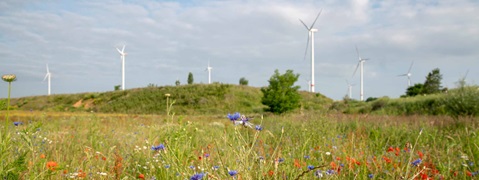The open-cast mine prepares the ground for recultivation itself. Suitable substrates are cleanly separated from the rock and transported to the back of the open-cast mine using conveyors. Spreaders first tip clay, sand and gravel into the excavated areas in order to refill the open-cast mine. They then place a drainage layer made of water-permeable material on top. Nowadays, slopes and troughs are designed to look as natural as possible, which means that they are as irregular as nature itself. In areas where reforestation is planned, a mixture of loessic loam and gravel is applied as the top layer of soil, which is known as soil for woodland restoration (Forstkies). This material is loose enough for the roots of the trees to penetrate deep into the soil. It is also loamy enough to store plenty of water for drier seasons.
Areas recultivated with soil for woodland restoration are no longer levelled, instead they are either left as they are or carefully flattened without the areas being driven over in order to avoid compaction, and thus waterlogging and erosion, and to take advantage of the microclimatic benefits of tipping ridges and small troughs. In areas where new farmland is to be developed, spreaders apply pure loess and loessic loam. The same goes for areas to be afforested in the plane. This layer must be at least two metres thick following some subsidence. Then the loess is carefully flattened. Water areas and periodically wet locations are another element of recultivation. Lakes can now be found in recultivated landscapes; large water bodies are also planned for the residual mining holes of current open-cast mines due to the mass deficit to be expected after coal mining.


